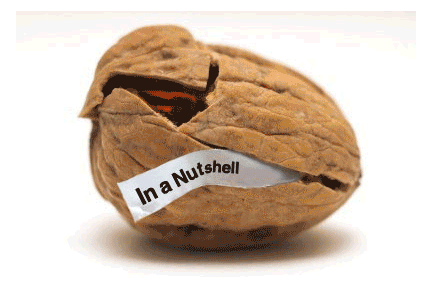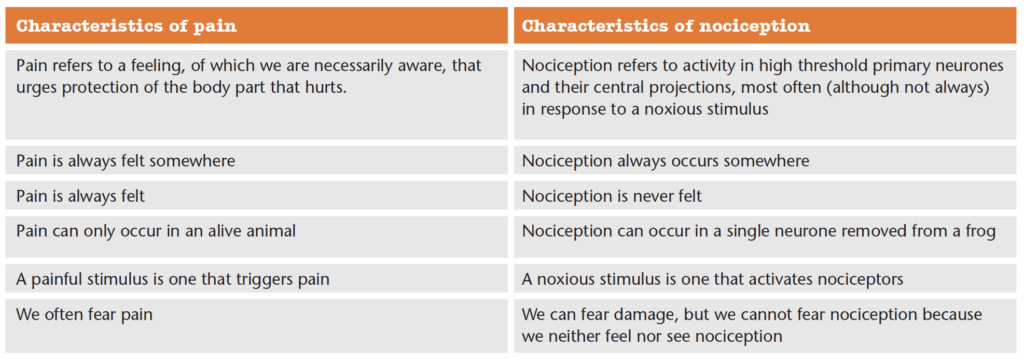In a nutshell

In Explain Pain Supercharged, Lorimer Moseley and David Butler proposed The Grand Poobah* Pain Theory. They offered four key statements to describe the GPPT ‘in a nutshell’:
1. Pain is an unpleasant feeling that is felt somewhere in the body and urges us to protect that bodily location.
2. Pain is one of many protective mechanisms. Others include movement, immune, cognitive, endocrine and autonomic.
3. Pain is the only protective mechanism we are necessarily aware of and compels us to do something to protect the painful bit.
4. Pain is modulated by any credible evidence that protection is warranted.
Two tables

And two tables summarising essential ideas around pain and protection and how to talk about them. Table One highlighted the vital difference between pain and nociception. Table Two called out some nonsense terms and offered both scientifically accurate and sensible lay terms as alternatives.
Table 2.1 from Explain Pain Supercharged

Table 2.2 from Explain Pain Supercharged

It is remarkable…
For many reading this, these ideas may be deeply embedded and second nature, but as Lorimer and David reflect in Explain Pain Supercharged:
“It is remarkable that these concepts are yet to be completely adopted within the pain science and clinical community.” (EPS p22)
These four key ideas and two tables will have a place as you Explain Pain to people experiencing problem pain states.
Additionally, as the #painrevolution continues to gain momentum, these fundamentals will also be helpful in the role that is increasingly being taken on by many in this space – that of public advocate for people and pain science.
-NOI Group

I have a few comments, which are made in the spirit of collegiality (that is, we are all in this together).
Four Key Statements:
How can a person protect his or her entire body when their chronic pain is felt diffusely?
“Pain is a mechanism” is problematic. The IASP regards it as an experience.
“Pain is modulated by any credible evidence that protection is warranted.” What constitutes credible evidence? Do you really mean “threat” in this context?
Table 2.1
“Pain is always felt somewhere”. Mrs Gradgrind (a character in “Hard Times” by Charles Dickens) located pain as being felt “somewhere in the room”.
“A painful stimulus is one that triggers pain”. There is no such thing as a painful stimulus!
Table 2.2
“Noxious stimulus OR painful stimulus”. See above.
Hi NOIgroupies,
Thanx for posting. Gives me the opportunity to raise something that puzzels me a long time. Your first statement is “Pain is an unpleasant feeling that is felt somewhere in the body and urges us to protect that bodily location”. Driven by 30 yrs of experience in treatment of people in chronic pain, I think it is justifiable to expand “that bodily location” to “the person”. It’s not only bodily threat but also social (interpersonal) threat (Eisenberger et al) and even intrapersonal threat that may give rise to a protective response i.e. pain. What’s your opinion on this?
Ronald, your suggestion is getting close to our revision of the IASP’s definition of pain: “Pain is a mutually recognizable somatic experience that reflects a person’s apprehension of threat to their bodily or existential integrity.”
Thx! This is a huge improvement to the IASP definition and a major contribution to (finally) end the dualistic view on pain, as it is still used by too many health care practitioners.
Ronald, we would welcome a full and frank discussion of our paper: https://journals.lww.com/painrpts/FullText/2018/04000/Reconsidering_the_International_Association_for.3.aspx#pdf-link